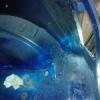First Start Up
#1

Posted 21 June 2013 - 07:29 PM
#2

Posted 21 June 2013 - 07:30 PM
#3

Posted 21 June 2013 - 08:20 PM
Personally I got the timing about right and went for it on my rebuilt engine. Crank over first without spark plugs in to spin some oil around.. You have to bite the bullet at some stage and go for it. Fresh oil, fuel and connect up an oil pressure gauge to see how the engine is behaving. It will all be a little tight at first so a higher oil pressure reading will be seen. Mine was idling at 65 psi the revved up it went to about 70 ish, but only run it a few times for a few minutes to keep oil on components.
Is it in the car or out?? Can be tested either way.
Graham
carb wise it is a case of filling the float bowl up and using some easy start sprayed into the air inlet, dizzy may need turning round to get it to fire up first time so the timing is right, or good enough to start.
Edited by grahama, 21 June 2013 - 08:22 PM.
#4

Posted 21 June 2013 - 09:13 PM
What you need to ensure is that its not running rich as you will suffer bore wash and you'll be stripping it down again
#5

Posted 21 June 2013 - 09:25 PM
When you do get it started, you should drive it as a new car. That is, not using full throttle, or going above roughly 50mph for a while. That's what the original driver's handbook says anyway.
Once you have 'driven in' the engine, you can gradually increase the amount of throttle and the speed.
#6

Posted 21 June 2013 - 09:26 PM
#7

Posted 21 June 2013 - 09:29 PM
#8

Posted 22 June 2013 - 11:52 AM
My list below will repeat a lot of the information above so I apologize to those who posted before me. I did read your messages.
- Top up all fluids. START WITH WATER for coolant, not antifreeze. Keep a bucket of water at hand and leave the radiator cap "off" during the initial start.
- Get a fire extinguisher and place it where it can be accessed quickly during the initial restart.
- Double check all connections. Make sure all the wiring is connected. Make sure all the fuel lines are in good condition and their connections tight.
- Arbitrarily set the static timing to somewhere between 5-8 BTDC. You can set the final timing later.
- Go through the carb manual and set the "nominal" adjustments IF you touched the carb during the time the engine was apart. There will be a certain number of turns you need to make to lower the jet for initial starting.
- Fit an oil pressure gauge if your car does not already have one.
- Pull the spark plugs and turn the engine over on the starter until it builds oil pressure. When you have oil pressure, refit the plugs and prepare to start the engine.
- If your car does not have a dash mounted tach, at least connect a tune-up tachometer.
- Start the engine and adjust the idle speed as necessary. IF you have a new cam and followers, bring the engine speed to 2000 RPM using the idle adjustment screws. Allow the engine to idle at 2000 RPM for 20 minutes. If the cam and followers are your old ones, a lower idle speed is acceptable.
- While the engine idles monitor the color of the exhaust downpipe, watch for fluid leaks, and watch the level of fluid in the radiator.
- When the thermostat opens the radiator water level will drop. Add more water to top it up. This may happen several times.
- If the exhaust turns bright red, richen the mixture slightly to keep the mixture from getting too lean.
- After 20 minutes switch the engine off.
- After the engine has cooled, replace the cooling water with antifreeze.
- Most people recommend rechecking the head torque at this point. When I do this, I go through the bolts in the proper order, loosening them 1/2 turn, then forward again to the proper torque. Do this bolt by bolt, one at a time. DO NOT loosen them all at once then tighten them. Again... bolt by bolt, one at a time, to prevent unseating the head gasket or allowing it to warp.
- Many recommend changing that first oil after 20 minutes. I typically give that oil a bit longer but certainly change it before putting the car into normal service.
After the initial break in period, set the timing, mixture, and idle speed where you want them.
Starting an engine for the first time is an anxious and stressful time. You will do fine as long as you double check your work.
#9

Posted 22 June 2013 - 12:34 PM
All of the above is great advice. If you can remove the oil pressure relief valve and pump some fresh oil into the galleries with a small pumped oil can, It just gives the engine a fighting chance to get the oil pressure up first time. Put the valve back together before you fire it up. Be prepared for a bit of smoke as it gets hot.
#10

Posted 22 June 2013 - 01:07 PM
#11

Posted 22 June 2013 - 03:30 PM
If the exhaust turns bright red at under 2000 rpm i'd stop pretty damned quick - that is almost certainly not mixture but timing that's a mile out.
I have managed to achieve the exact same thing on a CAT C175-16....with one bank of headers and both turbos a very lovely shade of red at idle.
1 user(s) are reading this topic
0 members, 1 guests, 0 anonymous users

















